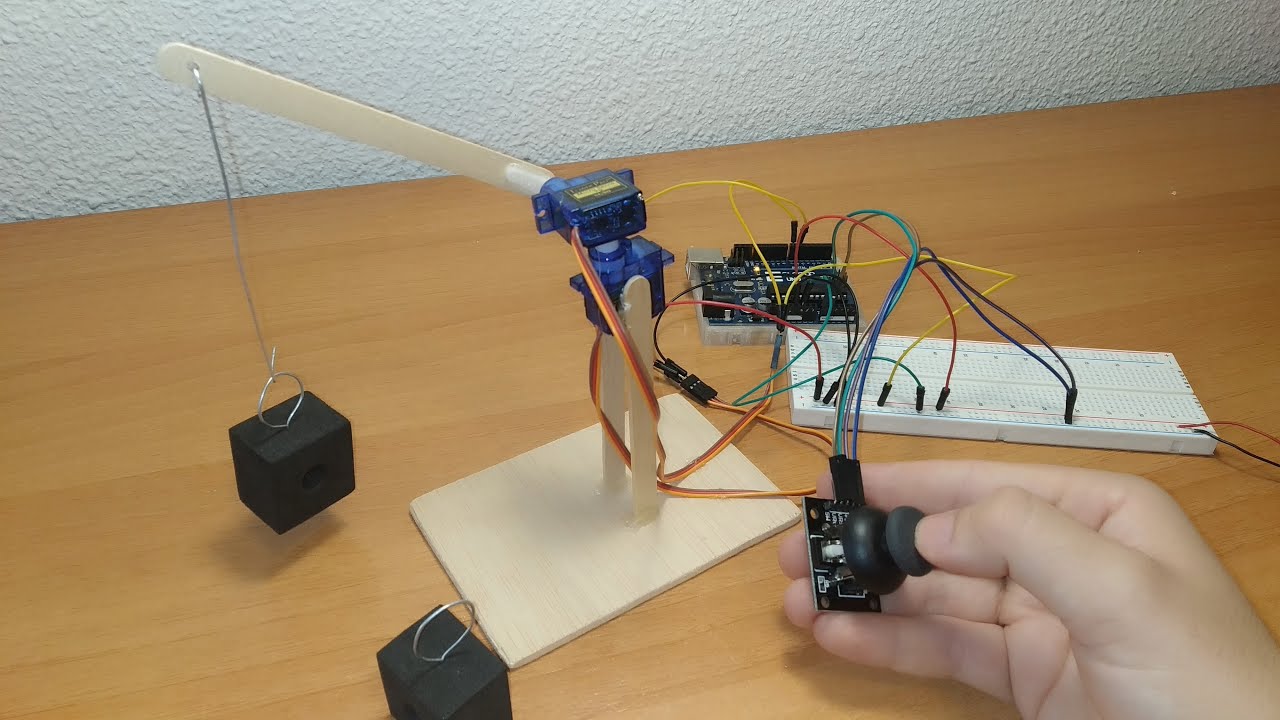How to Make Hydraulic Powered Robotic Arm from Cardboard
Summary
TLDREste video educativo presenta la ciencia de la hidráulica y cómo se puede utilizar el poder del agua para construir un brazo robótico sin necesidad de electricidad. Los presentadores guían a los espectadores a través del proceso de montaje, utilizando siringas, tubos, cartón y otros materiales para crear un brazo robótico que funciona con la presión del agua. La demostración incluye la creación de un panel de control y la conexión de los componentes, culminando con una prueba del brazo robótico levantando un frasco, destacando la eficacia de la hidráulica en la robótica.
Takeaways
- 🔧 La hidráulica es una ciencia que estudia el uso del agua como fuente de poder para mover objetos.
- 🤖 Se construye un brazo robótico que funciona utilizando el principio de la hidráulica en lugar de electricidad.
- 🔬 Se utilizan objetos como jeringas, tubos de infusiones, goma de pegar y yeso para crear el brazo robótico.
- ✂️ Se requiere de herramientas como tijeras, cortadores, un taladro y un destornillador para la construcción.
- 👷 La supervisión de un adulto es esencial para las tareas que implican el uso de herramientas cortantes y herramientas eléctricas.
- 🧩 El brazo robótico se compone de piezas de cartón, varillas y jeringas conectadas para simular el movimiento de un brazo humano.
- 💧 El agua actúa como motor del brazo robótico, moviendo los componentes a través de la presión hidráulica.
- 🎨 Se utilizan tubos de diferentes colores para identificar y controlar las diferentes partes del brazo robótico.
- 🛠️ Se asemeja a un motor de presión hidráulica, donde el agua es empujada a través de los tubos para mover las jeringas y, por ende, el brazo.
- 👍 Se anima a los espectadores a dar 'me gusta' y compartir sus propias creaciones robóticas si les gustan los videos de robots.
Q & A
¿Qué es la hidráulica y cómo se relaciona con el vídeo?
-La hidráulica es una ciencia que estudia el poder del agua y cómo usarlo para ayudar a las personas a construir y levantar objetos. En el vídeo, se utiliza la hidráulica para crear un brazo robótico que funciona con el agua en lugar de electricidad.
¿Por qué no se necesitan baterías para el brazo robótico presentado en el vídeo?
-El brazo robótico funciona con el poder hidráulico del agua, lo que significa que no requiere electricidad o baterías para operar. El agua actúa como el motor del robot.
¿Qué materiales son necesarios para construir el brazo robótico hidráulico según el guion?
-Se necesitan síringes, cartón, un arma de pintura para los ojos, un lapicero, una regla, pinzas, tijeras, tubos de infusión, un taladro, abrazaderas, broches y pegamento caliente.
¿Cómo se asegura la seguridad durante la construcción del brazo robótico en el vídeo?
-Se hace hincapié en que los pasos que requieren herramientas como el taladro y las pinzas deben ser realizados bajo la supervisión de un adulto para garantizar la seguridad.
¿Qué función tienen los broches en la construcción del brazo robótico?
-Los broches se utilizan para conectar las piezas de cartón y asegurar los tubos de infusión en las síringes, permitiendo así el movimiento del brazo robótico.
¿Cómo se conectan las síringes para permitir el movimiento del brazo robótico?
-Las síringes se conectan a través de tubos de infusión, y el agua es transferida de una síringe a otra para crear movimiento en el brazo robótico.
¿Cuál es el propósito de los colores en los tubos del brazo robótico?
-Los colores en los tubos ayudan a identificar qué parte del brazo robótico se controla con cada síringe, facilitando la operación y la memorización de cada función.
¿Cómo se asegura que el brazo robótico funcione correctamente una vez construido?
-Se debe asegurar que todos los componentes estén correctamente conectados y que haya suficiente espacio para el movimiento de los broches y síringes. Además, se deben seguir las instrucciones paso a paso para garantizar que todo esté en su lugar.
¿Qué se aprende del vídeo sobre la aplicación práctica de la hidráulica?
-El vídeo muestra una aplicación práctica de la hidráulica al construir un brazo robótico que utiliza el agua en lugar de baterías o motores eléctricos, demostrando que el agua puede ser un motor eficaz.
¿Por qué es importante la supervisión de un adulto durante la construcción del brazo robótico?
-La supervisión de un adulto es crucial para evitar lesiones y garantizar que se siguen las instrucciones de manera segura, especialmente con herramientas y materiales que pueden ser peligrosos para los niños.
Outlines

هذا القسم متوفر فقط للمشتركين. يرجى الترقية للوصول إلى هذه الميزة.
قم بالترقية الآنMindmap

هذا القسم متوفر فقط للمشتركين. يرجى الترقية للوصول إلى هذه الميزة.
قم بالترقية الآنKeywords

هذا القسم متوفر فقط للمشتركين. يرجى الترقية للوصول إلى هذه الميزة.
قم بالترقية الآنHighlights

هذا القسم متوفر فقط للمشتركين. يرجى الترقية للوصول إلى هذه الميزة.
قم بالترقية الآنTranscripts

هذا القسم متوفر فقط للمشتركين. يرجى الترقية للوصول إلى هذه الميزة.
قم بالترقية الآنتصفح المزيد من مقاطع الفيديو ذات الصلة

BRAZO ROBÓTICO con SISTEMA HIDRÁULICO | Cómo se hace | MANUALIDADES RECICLAJE | DIY Te Digo Cómo

¿COMO HACER UN BRAZO ROBOTICO DE CARTÓN? SUPER FACIL

Como hacer una mano hidráulica con jeringas - Hydraulic hand winth syringes

BOMBA HIDRÁULICA DE ARIETE

GRUA con ARDUINO || PROYECTO con servomotores || Para principiantes [Explicado paso a paso]

BRAZO ROBOTICO con ARDUINO || PROYECTO Fácil y Rápido
5.0 / 5 (0 votes)
